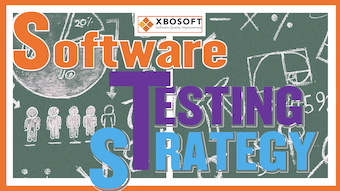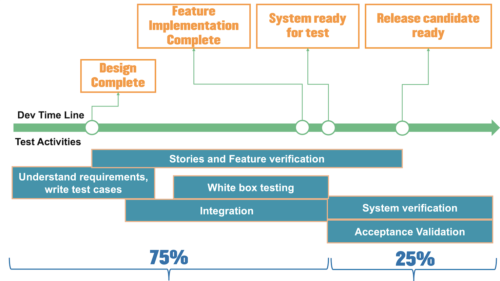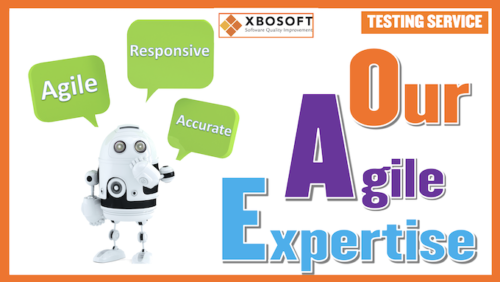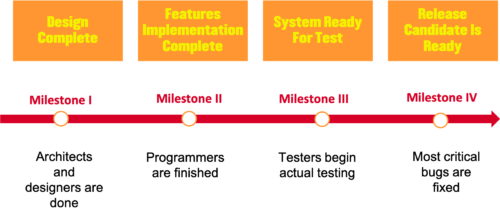| Many teams that use an Agile development methodology think they may not need a test plan. But, especially when transitioning to Agile, they wonder what testers are supposed to do! An Agile test plan is a document that outlines the testing strategy and approach for a project that is using Agile development methodologies. Just like critical Agile principles, it should be flexible and adaptable to changes, as Agile development emphasizes iterative, incremental delivery of working software. |  |
What is Agile in software testing?
In software testing, Agile refers to the use of Agile methodologies during the testing phase of software development. An approach to project management, Agile emphasizes flexibility, rapid iteration, and collaboration between cross-functional teams. In Agile software testing, testing is integrated into the development process and occurs throughout the project rather than being a separate phase at the end as in the waterfall methodology. This allows for defect prevention and earlier detection of defects and more frequent feedback and adjustments to the software. Agile testing also places a strong emphasis on automation testing earlier in the lifecycle and on testing the software from the perspective of the end user.
Why do you need an Agile test plan?
Teams need a test plan to document and thus understand their priorities test coverage, method, and responsibility. If you don’t document it, it will get forgotten. You write down notes to yourself to remember things right? Taking it a step further than sticky notes to remind yourself of ‘to-dos’, we like to think of a test plan as Principles (taken from Ray Dalio where one of the key principles is to write down your principles.) that you should apply to testing decisions and actions that you will take on a daily basis. In addition, questions such as “Who tests what?” or “How are test results reported?” must be answered in the test plan.
This is not only about the role assignment but may also include additional responsibilities such as collecting and maintaining data, setting up test environments, and using tools.
READ MORE
The BEST Guide To A Successful Agile Testing StrategyBy Amy Dong | February 19th, 2021 |
 |
What should your Agile test plan encompass?
You should include the following in an Agile test plan:
Objectives: Clearly define the testing goals and objectives for the project, including what you aim to achieve with the testing and what areas of the project will be covered.
Scope: Define the scope of testing, including which features and requirements will be tested and which will not.
Approach: Describe the testing approach you will use, including any testing methodologies, tools, and techniques that will be employed.
Roles and Responsibilities: Identify the team members who will be involved in testing, including testers, developers, and stakeholders, and their respective roles and responsibilities.
Test Environment: Describe the environment in which testing will be conducted, including hardware, software, and network configurations.
Schedule: Provide an overview of the testing schedule, including milestones and deadlines, and a breakdown of how testing will be carried out throughout the project.
Deliverables: Identify the deliverables that will be produced as part of the testing process, such as test cases, test plans, and test results.
Risks and Mitigation: Identify potential risks and issues that could arise during testing, and describe the mitigation measures that will be put in place to address them.
Characteristics of an Agile test plan
The Agile test plan should be a living document updated regularly as the project progresses and as new information becomes available. It should be shared with all stakeholders and be readily available for reference throughout the project.
It’s also worth noting that Agile team testing strategies are also collaborative work between the whole team and include tasks like testing, debugging, and other quality assurance activities. It’s a cross-functional teamwork.
READ MORE
The Best Software Test Strategy In 10 StepsBy Philip Lew | October 27th, 2021 |
 |
Agile workflow in an Agile test plan
“In Agile, step by step processes can get blurry. Be flexible. Go where you are wanted and needed, all with the goal of quality.”
Shorter is better

Sooner than later
Therefore in an Agile test plan, feature verifications should start as early as possible, immediately from the end of design. About 60% of sprint time is spent from the end of Milestone I to Milestone II. During this period, the stories/features verification and integration tests should be completed. According to our project experience, after Milestone III, only 20% to 25% of sprint time can be allocated to system regression tests and acceptance tests for release candidates.
Agile test plan components and considerations
In contrast to a traditional waterfall test plan, an Agile test plan is more time-box-oriented and related to the timing of the development iteration. Basically, in ‘Agile’ fashion, we do what is needed within a framework and divide our plan into these areas of consideration:
Requirements and design phase
This phase is similar to the traditional test workflow. Major tasks consist of understanding the features and user stories but for only that iteration, defining the test strategy, defining the scope of tests, and broadly estimating how much time should be spent. But there are some differences:
- Defining test drivers or test interfaces becomes more important in this phase. This is because, in most cases, UI is not ready, and the tests must be executed through these interfaces.
- Since additional time is spent on test driver design, test case design will require less time. It is common to find that test cases in Agile are more of a loose guide.
This phase will spend 10% – 15% of sprint time.
When requirements change, Agile workflows allow you to adapt to these changes – so you can’t have a vast rigid test plan.
READ MORE
The Ultimate Guide To Agile Requirements GatheringBy Jimmy Florent | September 5th, 2022 |
 |
Stories/Features verification phase
Test execution should start for stories or features, even if they are not completely functional. The tests activities may include:
-
- Investigation of the features
- Static review of the code
- Gray box tests using drivers or interfaces to test the features
- Black box test of features with the existing UI
- Cross-story tests among features – as nightly builds are done, features and stories will begin to work together, so scenarios that involve more than one, sometimes 2 and 3 user stories, need to be tested.
- Integration tests
This phase’s main purpose is to ensure all the new features work well within themselves and with other components. Additionally, a lot of defects should be found during this period. Some will be fixed immediately and need to be validated in the next daily build, and others will be postponed to the next milestone or the next release.
This phase will take about 50% – 60% of sprint time.
System verification phase
When most features are implemented, the system will be integrated for testing. As mentioned above, you may only have 20% left before you have to deliver ‘working’ software at this point. Additionally, you must reserve some time for phase 4 when a release candidate is ready to perform smoke tests.
This phase ensures the new feature set and all the latest changes do not destroy or disrupt the system in any way. This also includes ensuring that the previous set of features function as they should with the system.
In addition to this, you need to plan time for defect validation. This means there will be no spare resources to conduct any more feature tests. All the rest of the resources and time available should be placed into regression testing.
Acceptance phase
Once regression (usually targeted and not complete) is complete, the product is nearly ready to be released. Most bugs are fixed during the regression tests, the system becomes stable, and a release candidate is built. Running a smoke test before the release is necessary to ensure all the changes made will not break the system and confirm that all critical bugs are fixed.
Some resources can be allocated to exploratory testing for the newly developed features within this sprint.
Feedback, retrospective, and change
In the Agile test plan, feedback and retrospectives are essential components that continuously improve the testing process.
Feedback
Is a way for team members to provide information to each other about their work and to identify areas for improvement. For example, during testing, the testers may provide feedback to the developers about any bugs or issues they have encountered. This feedback is used to identify and fix defects early in the development process, saving time and resources in the long run.
Retrospectives
Are meetings held at the end of a sprint or project to review the work that has been done and identify areas for improvement. During the retrospective, team members discuss the positive and negative situations they encountered and what can be done differently in the future. These meetings are an important way for the team to reflect on their work and identify improvement opportunities.
Change
Is also an essential aspect of Agile testing. In Agile testing, changes to the requirements or design of the software can be incorporated into the testing process as they occur, rather than waiting until the end of the project. This allows the team to respond quickly to changing customer needs and to deliver a more effective product.
Technical Debt
Many don’t plan for technical debt. The fact is, if you drive faster, you open yourself to more risk and crashing. Agile, with a focus on velocity, can also crash if you don’t plan for quality. Addressing technical debt should be part of the plan. What often works best is periodically dedicating an iteration to removing debt. This comes in the form of documenting code, correcting requirements that were coded differently, but the documentation is lagging, fixing automation scripts, refactoring, optimizing database tables, etc…
Sliding and staggering
Shifting regression to 1⁄2 a cycle later can also relieve the regression burden without much loss in velocity. Most teams operate a hybrid form of Agile while still holding to Agile principles centered around velocity, quality and working software delivered incrementally so that rapid feedback can be given and change direction-add-subtract requirements and features if necessary.
Time Estimate
When everyone sits down and does the plan together, you estimate the amount of work needed for each task and sub-task and assign tasks to individuals. This is a critical component of Agile. On the one hand, you don’t want a plan; on the other hand, here you have a task, a timeline, and a person assigned! The difference is that this is an iteration rather than a project plan. These estimates are critical to the success of the project and the iteration. It’s important for people to estimate and log real hours rather than pipe dreams.
From a QA point of view, testers need to speak up and include testing effort into the plan. Too often, its overlooked and just added on with a rough percentage or unit allocation without real thought into the complexity of the features that are being tested.
Agile test plan – Recap
Outlining the testing strategy and approach for an Agile software development project, the Agile test plan should be flexible, adaptive, and focused on delivering value to the customer.
- Flexibility: Agile testing should be flexible enough to adapt to changes in requirements or design, and to incorporate new information as it becomes available. The Agile test plan should outline how the team will handle changes and ensure that the testing is aligned with the overall project goals.
- Adaptive: Testing is integrated into the development process and occurs throughout the project rather than being a separate phase at the end.
- Value-driven: The Agile test plan should outline how the team will test the software from the end user’s perspective.
- Automation: Agile testing places a strong emphasis on automating testing and should therefore outline how the team will use test automation tools and techniques to increase efficiency and reduce the time required for testing.
Need Help with Your Agile Testing?
Most Popular
 |
By: Philip Lew |
|
 |
5 Of The Biggest Challenges In Automation Testing By: Jimmy Florent |
|
 |
The 4 Best Platforms For Mobile Testing In The Cloud By: Jimmy Florent |
|
Contact us today for your Agile Testing.
We Recommend
The 5 Key Elements To Successful Agile Sizing
By Jimmy Florent | September 5th, 2022
In this session, we will discuss the challenges of Agile sizing, Epics, Stories, Tasks, and Spikes. We will start the discussion by defining the Agile components and then discuss the different sizing processes used and the thought process behind the philosophies.
The Ultimate Guide To Manual Testing vs Automation Testing
By Jimmy Florent | September 14th, 2022
Deciding between manual testing vs automation testing can seem like a cornelian dilemma. At least, that’s how it transpires when dealing with many of our clients. So we thought we’d help you make the decision between manual testing vs automation testing, and when and where they should be applied.
The Best Test Automation Tools Guide In 2023
By Jimmy Florent | January 5th, 2023
Choosing the best test automation tool requires you to understand that all test automation tools are not alike and that all software applications are different.






Leave A Comment